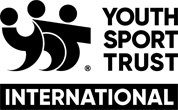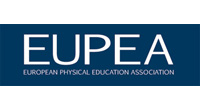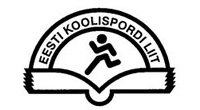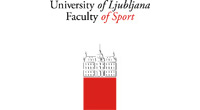Physical Activity
Download| Question | Term | Definition / Description |
|---|---|---|
| 2.10 | Active break | An active break is a short bout of physical activity performed as a break from academic instruction to increase or decrease students activation. In order to use it optimally, one should find the situational appropriate moment, as it should be used precisely when, due to declining activation, the attention of the students falls and their learning performance weakens, or in the case when students are overly activated and disturb the learning process. Short breaks are unrelated to the learning content of the lesson and can be implemented at the beginning, during or at the end of the class. |
| 2.17 | Active/dynamic sitting | At school, children are used to sitting for a long time, but this can have negative consequences for their development and ability to concentrate. For example, sitting too long leads to poor blood circulation, resulting in poor oxygen supply to the brain and high stress on the back muscles. With skittering back and forth, tilting or supporting the head, the body endeavors to counteract this. Dynamic or active sitting means allowing students to frequently change seat positions. The students learn that they can switch between sitting positions, take other seat variants or use other seat furniture. This leads to the reduction of internal tensions and to an improvement of the ability to concentrate. |
| 2.9 | Active homework | One way to motivate students to be active outside of school is active homework. Active homework consists of tasks that are linked to movement activities. Here, it is important to first explain and demonstrate the active homework tasks to the students. An advantage of active homework is that students are active at home, in a safe environment. Thus, they are not exposed if they do not master a task so well. There are a variety of opportunities for active homework, including challenging tasks such as juggling with balls or cloths or simple relaxation and respiratory tasks. |
| 2.23 | Active learning | The method of active learning enable students’ to move in the classroom and reduce their sedentariness. In this case, the lessons are designed for students to learn the contents through, with or in movement and thus through experiencing, thinking and acting and recognize contexts. This allows students to capture and process content through multiple sensory channels. Contents learned in this way are better anchored in the child’s memory. At the same time, muscle activity stimulates the growth of brain vessels, synapses and neurons, increases the inflow of oxygen and fuel in the brain, raises the level of hormones in the blood, and thus increases children’s concentration, and improves their cognitive functioning and psychological status. But also the joy of learning is maintained by active learning, as more activities in the everyday school life ensure a greater satisfaction with the students. |
| 2.7 | Active recess | The aim of active recess is to help the students to increasingly perceive recesses between classes as opportunities for being active. For this, they need access to playground equipment and the playground must be designed in a movement friendly way. Through active recess, the students learn to acquire the ability to act in the sense of the concept of active schools, by making play and active recess self-determined. This presupposes that the children spontaneously work together, play together and communicate, which contributes to the promotion of their social skills. Active recess also contributes to the rhythm of everyday school life, which also contributes to the general well-being of the students. |
| 2.18 | Cross-curricular classes | Cross-curricular classes are a concept and an organizational form of teaching and mean to step out of individual subjects in order to thematically connect different school subjects. In cross-curricular teaching the teaching goals of all included subjects are fulfilled simultaneously. Cross-curricular physical education makes it possible, among other things, to make learning at school more active and holistic. But also topics such as fair play or health, can be taken up in several subjects. Cross-curricular classes can go beyond the traditional framework and provide access to interdisciplinary, theoretical and life-world contexts. In addition, physical education has the opportunity to lift mental and physical activity in an outstanding way to the competence level of holistic action. |
| 2.12a | Learning in movement | Learning in movement is a concept that teaches children to learn in a playful way and whilst moving. Here, learning and movement are staged simultaneously but are otherwise unrelated, e.g. learning a poem while bouncing on the trampoline or dancing. This approach links motor memory to cognitive functions and improves the recall of the acquired knowledge, while at the same time exploits the improved brain function. Movement in this approach is used as a physiological brain pacemaker and is usually of moderate to vigorous intensity. Examples of learning in movement are games like running dictations or moving vocabulary. |
| 2.12.b | Learning through movement | In learning through movement, a learning object is acquired with the help of movement. It utilizes movement to execute cognitive tasks, such as counting or calculating. Movement in this approach is used as a learning tool. For example, instead of counting with the help of beans, children count by bouncing the ball, clapping their hands, or jumping, etc. The intensity of movement in this approach is usually of low to moderate intensity. Examples include also moving experiments like running along the classroom or playground to promote a better idea of size and length measures. |
| 2.20 | Outdoor classes | Outdoor classes are organized learning that takes place outside the classroom on the school grounds, near school or away from school. The spatial distance is not of great importance, so that the courtyard of a school also falls under the concept of outdoor classes, the same as an excursion into a forest or a museum or a geography class during hiking. Outdoor classes have curriculum topics and interact with classroom teaching. The place of learning outside the school is related to the learning object and provides a learning gain compared to the classroom. |
| 2.1 | Physical Activity | Physical activity is any movement exerted by skeletal muscles that results in energy expenditure above basal metabolic rate. Physical activity is understood to mean practically any kind movement activity, such as walking, cycling, dancing, sports games, etc. Regular physical activity is one of the most important factors influencing the quality of life and makes a significant contribution to the maintenance of health and well-being. Targeted physical activity promotion at school helps to counteract the development of disease and discomfort at any age, to promote the motor development of students and to improve their learning capacities in all subjects. |
| 2.5 | Physically Active School | The concept of a physically active school goes back to the Swiss pedagogue Urs Illi, who developed it in the mid-eighties and thus pleaded for more movement in the school. A physically active school motivates students to live an active lifestyle. It accompanies the students with active learning, conveys the content of the movement promotion, and provides time and space for movement any physical activity in general. A physically active school tries to implement more physical activity in the traditional “sitting school” and thus supports the students in their health, in their development and in their learning. |
| 2.16 | Relaxation phases | Relaxation phases are understood as brief interruptions of the lesson and the execution of externally controlled movement activities, which direct the thoughts to persons, objects, mental phenomena or to one’s own body. Exercises are aimed at calming and stress-relieving effect. By relaxation phases it comes to a short-term shutdown and thus among other things to a reduction of muscle tension, the reduction of restlessness, to prevent stress sensations, as well as to increase the ability to concentrate. Relaxation phases can thus contribute to a pleasant atmosphere in the classroom. |
Physical Education
| Question | Term | Definition / Description |
|---|---|---|
| PE 2.2 | Cognitive learning outcomes | Cognitive learning outcomes oriented to think skills include the ability to intellectually simpler with the ability to solve a problem (problem solving). Adams, N.E.Bloom’s taxonomyof cognitive learning objectives, J Med Libr Assoc. (2015)Jul; 103(3): 152–153. https://assesmentoflearningoutcomes.weebly.com/cognitive-learning-objectives.html |
| PE 2.5 | Formative assessment |
Formative assessment is the use of day-to-day, often informal, assessments to explore pupils’ understanding. It enables the teacher to decide how best to help pupils develop that understanding. http://ccea.org.uk/curriculum/assess_progress/types_assessment/formative by Council of curriculum, examinations and assessments 29 Clarendon Road, Clarendon Dock, Belfast, BT1 3BG |
| PE 2.19 | Inclusion | Inclusive education can be seen as a process of strengthening the capacity of an education system to reach out to all learners in the community. It is, therefore, an overall principle that should guide all educational policies and practices, starting from the belief that education is a basic human right and the foundation for a more just society. Training Tools for Curriculum Development Reaching out for all Learners: a Resource Pack for supporting inclusive Education. IBE-UNESCOC.P. 1991211 Geneva 20Switzerland |
| PE 2.2 | Learning outcomes | Learning outcomes are statements that describe significant and essential learning that learners have achieved, and can reliably demonstrate at the end of a course or program. In other words, learning outcomes identify what the learner will know and be able to do by the end of a course or program Prøitz, T.S. Educ Asse Eval Acc (2010) 22: 119. https://doi.org/10.1007/s11092-010-9097-8 |
| PE 2.3 | Movement areas | Movement areas are movement-related content areas in physical education. They give an indication on the activities to be worked out in Physical Education lessons and group general physical activities and sport-related activities in categories. They can consist of common sport-related activities, skills and games or, in a more wide-ranged interpretation, of general physical activities. Examples for movement areas are games, track and field activities, swimming or water-related activities, dance activities, etc. Scheuer, C. (2016). Analysis of the National Curriculums for Physical Education in Luxembourg. SHAPE-Project. |
| PE 2.7 | National curriculum |
A curriculum is a systemic collection of the what, the why, the when and the how learning takes place within a specific context. The nature of a curriculum is comprehensive and structured around a clear and strategic vision of holistic and inclusive development of all learners aimed at equipping them with the essential knowledge, skills and competencies, reassuring quality learning Marope, M. 2017. Reconceptualizing and Repositioning Curriculum in the 21st Century: A Global Paradigm Shift. Geneva, UNESCO-IBE.; Stabback, P. 2016. What makes a Quality Curriculum? Geneva, IBE-UNESCO. In-Progress Reflections on Current and Critical Issues in Curriculum and Learning, No. 2. Geneva, IBE-UNESCO; Opertti, R. 2017. Curriculum in the Education 2030 Agenda: Latin America and the Caribbean. In-Progress Reflections on Current and Critical Issues in Curriculum, Leaning, and Assessment, No. 10.Geneva, IBE-UNESCO. |
| PE 2.6 | Peer assessment | Peer assessment is a powerful meta-cognitive tool. It engages students in the learning process and develops their capacity to reflect on and critically evaluate their own learning and skill development. https://teaching.unsw.edu.au/peer-assessment |
| Physical education (Appears in many questions) |
Physical Education is the planned, progressive learning that takes place in school curriculum timetabled time and which is delivered to all pupils. This involves both ‘learning to move’ (i.e. becoming more physically competent) and ‘moving to learn’ (e.g. learning through movement, a range of skills and understandings beyond physical activity, such as co-operating with others). The context for the learning is physical activity, with children experiencing a broad range of activities, including sport and dance. http://www.afpe.org.uk/physical-education/wp-content/uploads/Definition_of_PA_PE__School_Sport.pdf |
|
| PE 2.2 | Physical learning outcomes |
Learning outcomes are statements of what is expected that a student will be able to DO as a result of a learning activity. (Cf cognitive learning outcomes) Jenkins, A. & Unwin, D. (2001) How to write learning outcomes. http://www.ncgia.ucsb.edu/education/curricula/giscc/units/forhttp://www.ncgia.ucsb.edu/education/curricula/giscc/units/format/outcomes.htmlm at/outcomes.html |
| PE 2.1 | School-based curriculum | Based on the basic requirements of the central curriculum, students should be entitled to learn. Schools are encouraged to adapt the central curriculum in developing their school-based curriculum to help their students to achieve the learning targets and aims of education. Measures may include readjusting the learning targets, varying the organisation of contents, optional studies, learning, teaching and assessment strategies. A school-based curriculum, hence, is the outcome of a balance between the curriculum recommended by the national authority and the autonomy of the schools and teachers. https://www.edb.gov.hk/en/edu-system/primary-secondary/applicable-to-primary-secondary/sbss/school-based-curriculum-secondary/principle/definition.html (adapted) |
| PE 2.6 | Self-assessment |
Self-evaluation refers to the ability of someone to make judgments about personal performance, traits, qualities, and/or skills. This requires that an individual compare a personal goal that has been set against a previously established standard (Schunk, 2012). Students who make positive evaluations about themselves are more likely to feel successful about their learning and will be motivated to work hard as they think they are able to continue acquiring new knowledge and/or skills (Schunk, 1991). Schunk, D. H. (2012). Learning Theories, an Educational Perspective (6th ed.). Boston, MA: Pearson Education Inc. |
| PE 2.2 | Social learning outcomes |
The outcomes that represent social learning include, (a) the development in interpersonal skills, (b) interpersonal relations and the ability to listen to team members, and (c) beliefs, the sharing of ideas, and constructing new understandings together ( Casey, 2013; Casey et al., 2009; Casey & Dyson, 2009; Dyson, 2001, 2002; Dyson & Strachan, 2000, 2004; Goudas & Magotsiou, 2009). Casey, A. & Goodyear, V. A., (2015). Can cooperative learning achieve the four learning outcomes of physical education? A review of literature Quest,67(1),pp.56-72. |
| PE 2.4 | Summative assessment |
Summative assessment usually takes place after pupils have completed units of work or modules at the end of each term and/or year. The information it gives indicates progress and achievement usually in grade-related or numerical terms. Summative assessment gives pupils, parents and teachers valuable information about a pupil’s overall performance at a specific point in their learning. It provides information about their progress in: subject knowledge; understanding; and skills and capabilities. http://ccea.org.uk/curriculum/assess_progress/types_assessment/summative by Council of curriculum, examinations and assessments 29 Clarendon Road, Clarendon Dock Belfast, BT1 3BG |
School Sport
| Term | Definition / Description | References / examples |
|---|---|---|
| School Sport | Organised, regular, competitive or non-competitive sport activities in school settings. | |
| Competitive School Sport | Result and performance-oriented sport activities with comparable competitiveness in school settings. | Examples: Student Olympics, Inter-school competitions, etc. |
| Non-competitive School Sport | Regular, non-result-oriented sport activities for health, recreational, fun or social reasons in school settings. | Examples: Intra-school sport groups, grassroots festivals, etc. |
| School Sport festival | An organized mass sport activity where all the participants can be active at the same time by practicing different activities in different stations. Every student finishes all the stations, so it provides equal learning opportunities for all. Most of the time, music is played during the practice. | Example: Hungarian School Sport Federation’s Do60 Festival https://www.youtube.com/watch?v=JTpdizz4gsw |







